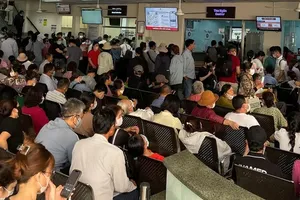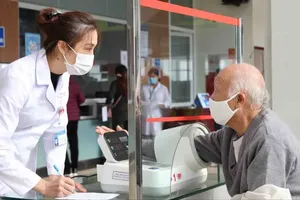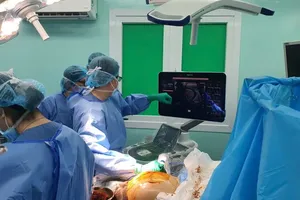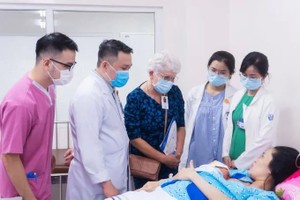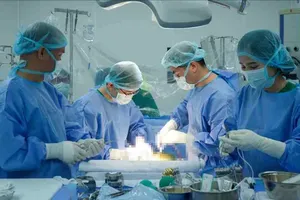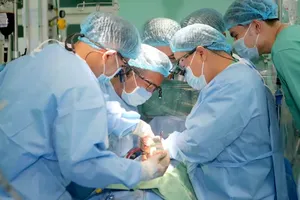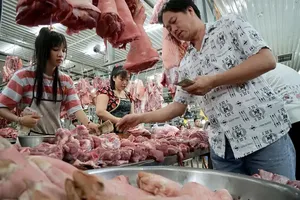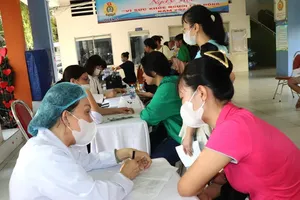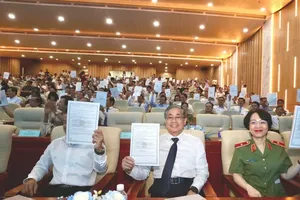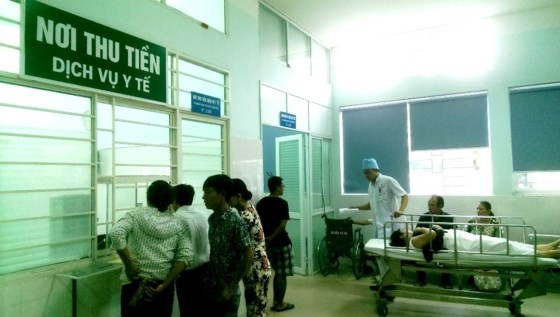
It is estimated that total treatment expenditure of self-pay patients will increase by 10 percent. Initially, 50 first-class hospitals will hike the fee
Circular 02/2017/TT-BYT, which takes effect in June, stipulates the maximum levels in the price list for medical examination and treatment services not covered by the medical insurance fund.
Mr. Nguyen Nam Lien, head of the ministry’s Department of Finance and Planning, said that not all hospital nationwide will raise the fee at the same time yet the Ministry of Health stipulates the level and schedule for first-class clinics while people’s committee in provinces will set the fee and timeline to lift the fee in hospitals; accordingly, hospitals will increase treatment fee at different time.
As per the circular, the new fee will be applied for self-pay patients in 2017 nationwide. To reduce the impacts of increased medical fee on uninsured patients, hospitals in 30 cities and provinces will change fee since August; while medical facilities in 15 provinces will adjust fee in October and these facilities in 18 provinces will have new fee in December.
Hanoi will implement the new fee in August and Ho Chi Minh City will apply in October. Deputy Minister of Health Pham Le Tuan said that adjustment of medical fee will be carried out gradually to suit each province’s socioeconomic conditions and locals’ income, aiming to control inflation and stabilize macroeconomics.
When it comes to hike in medical fee for uninsured patients, Mr. Lien said that as per the circular, healthcare service providers will apply the new hospital fee for more than 1,900 medical services to the uninsured and those insured patients opting for services not covered by the insurance fund. They will have to pay full treatment fees which rise twice or threefold the old ones.
Regarding examination fees, they will be VND39,000 in special hospitals while they are VND35,000, VND31,000 and VND29,000 per medical check at second-, third- and fourth-grade hospitals and infirmaries in districts, respectively. Specially, hi-tech coronary artery X-ray increases from VND5.1 million to VND5.8 million or scan costs VND20 million.
Bed charge also rises to VND 677,100 a day in intensive treatment room in special hospitals and they will be VND632,200 a day in first class hospitals and VND568,900 in second-class hospitals.
By the Insurance Company of Vietnam’s statistic, 81.7 percent or nearly 76 million Vietnamese people bought insurance cards. Just around 18 percent of the population or 20 million are uninsured people who will be heavily affected by the upcoming hike in hospital fees while insured patients, the poor people and social welfare beneficiaries will not be impacted by the new fee, said the Ministry of Health.
The government has increased the support for buying insurance cards for those whose economy is close to poverty line and those working in agriculture, fishery, forestry, salt making from 30 percent to 70 percent. Moreover, the price hike was made as the second step of the three-step road map for raising medical service prices.
Circular 02/2017/TT-BYT, which takes effect in June, stipulates the maximum levels in the price list for medical examination and treatment services not covered by the medical insurance fund.
Mr. Nguyen Nam Lien, head of the ministry’s Department of Finance and Planning, said that not all hospital nationwide will raise the fee at the same time yet the Ministry of Health stipulates the level and schedule for first-class clinics while people’s committee in provinces will set the fee and timeline to lift the fee in hospitals; accordingly, hospitals will increase treatment fee at different time.
As per the circular, the new fee will be applied for self-pay patients in 2017 nationwide. To reduce the impacts of increased medical fee on uninsured patients, hospitals in 30 cities and provinces will change fee since August; while medical facilities in 15 provinces will adjust fee in October and these facilities in 18 provinces will have new fee in December.
Hanoi will implement the new fee in August and Ho Chi Minh City will apply in October. Deputy Minister of Health Pham Le Tuan said that adjustment of medical fee will be carried out gradually to suit each province’s socioeconomic conditions and locals’ income, aiming to control inflation and stabilize macroeconomics.
When it comes to hike in medical fee for uninsured patients, Mr. Lien said that as per the circular, healthcare service providers will apply the new hospital fee for more than 1,900 medical services to the uninsured and those insured patients opting for services not covered by the insurance fund. They will have to pay full treatment fees which rise twice or threefold the old ones.
Regarding examination fees, they will be VND39,000 in special hospitals while they are VND35,000, VND31,000 and VND29,000 per medical check at second-, third- and fourth-grade hospitals and infirmaries in districts, respectively. Specially, hi-tech coronary artery X-ray increases from VND5.1 million to VND5.8 million or scan costs VND20 million.
Bed charge also rises to VND 677,100 a day in intensive treatment room in special hospitals and they will be VND632,200 a day in first class hospitals and VND568,900 in second-class hospitals.
By the Insurance Company of Vietnam’s statistic, 81.7 percent or nearly 76 million Vietnamese people bought insurance cards. Just around 18 percent of the population or 20 million are uninsured people who will be heavily affected by the upcoming hike in hospital fees while insured patients, the poor people and social welfare beneficiaries will not be impacted by the new fee, said the Ministry of Health.
The government has increased the support for buying insurance cards for those whose economy is close to poverty line and those working in agriculture, fishery, forestry, salt making from 30 percent to 70 percent. Moreover, the price hike was made as the second step of the three-step road map for raising medical service prices.
The Ministry of Health liaised with related departments to spend state budget and other resources to back close-to-poverty people to buy insurance.

